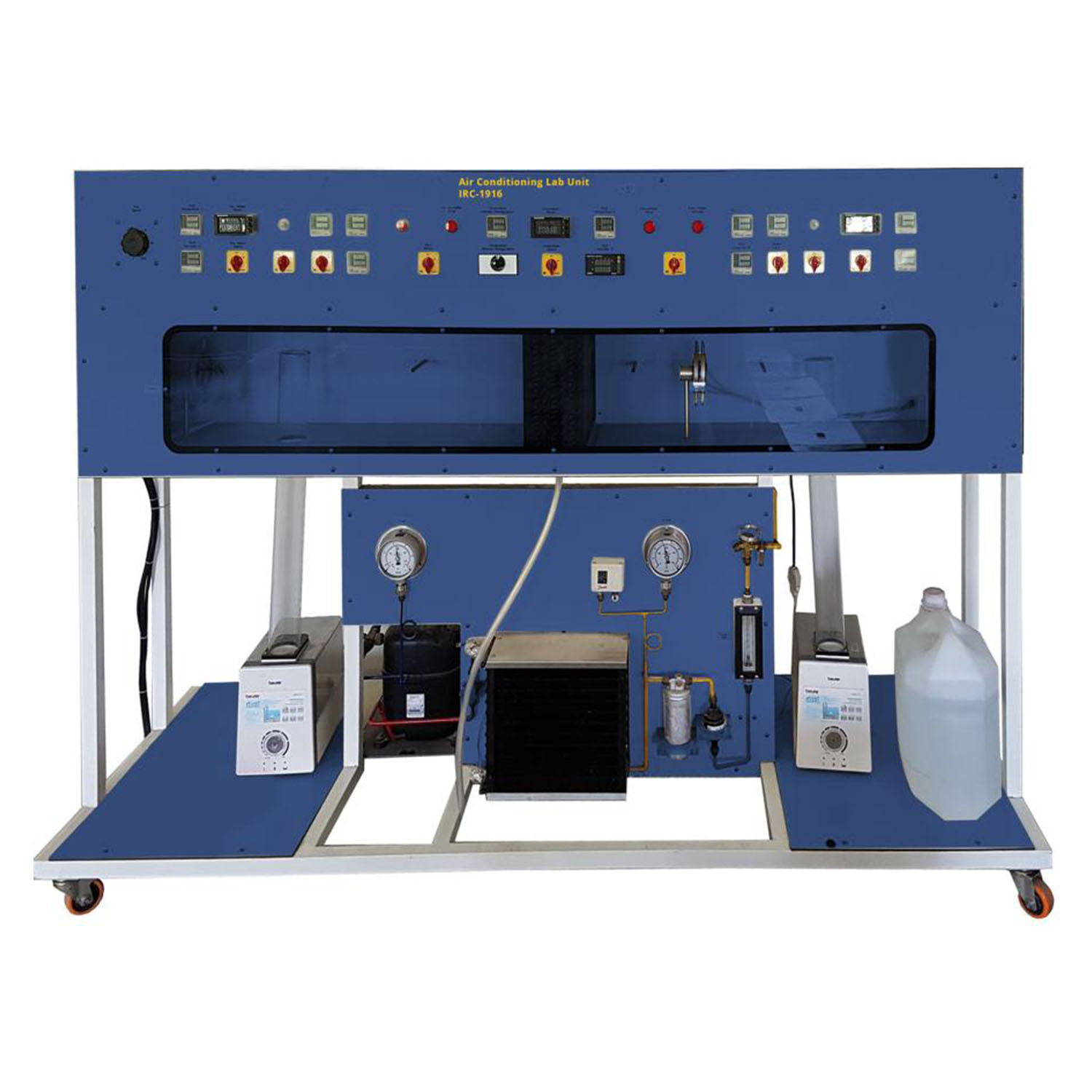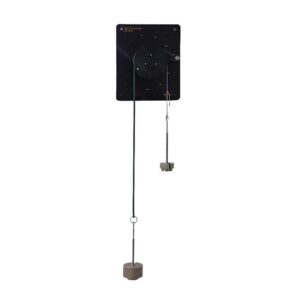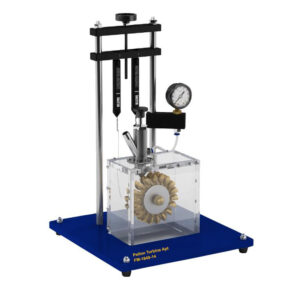In many daily situations the condition of the ambient air does not meet requirements for instance, a tropical greenhouse, the production of delicate components, or even comfortable offices. Air conditioning systems can change the air’s flow velocity, temperature, and humidity to meet the requirements of the desired room climate. The trainer looks at how each part of an air conditioning system works and what effect it has. All of the elements utilized in building services engineering are included in the trainer. The utilization of original parts was given special consideration. In an open air duct are placed air coolers (direct evaporators with condensing units), steam humidifiers, fans, air preheaters, and reheaters for air conditioning. These elements can all be turned on or off separately. The effect of each individual component on the conditioning of the air is as interesting as the effect of any combination of components. Prior to and following each stage, sensors record the air’s temperature and humidity in addition to the refrigerant’s pressure and temperature. On digital displays, the measured values can be shown. At the same time, a DAQ system allows for immediate transmission of the measured values to a PC (Optional). Data gathering software is not required. The well-structured instructional material sets out the fundamentals and provides a step-bystep guide through the experiments.
Software IRC-1916SW (optional)
DAQ software specially designed in National Instrument™, LABVIEW™ environment to measure and calculate the results of apparatus. The software is optional and while using software a set of electronic sensors are included. Software can be run with any Windows™ environment.




